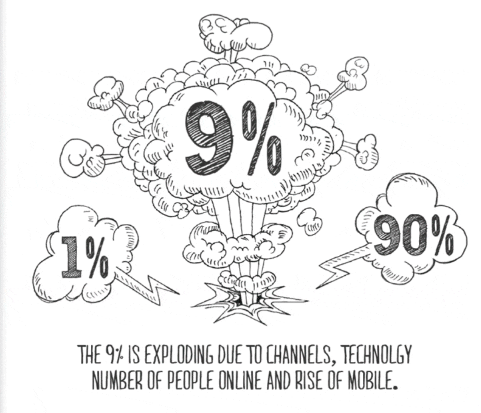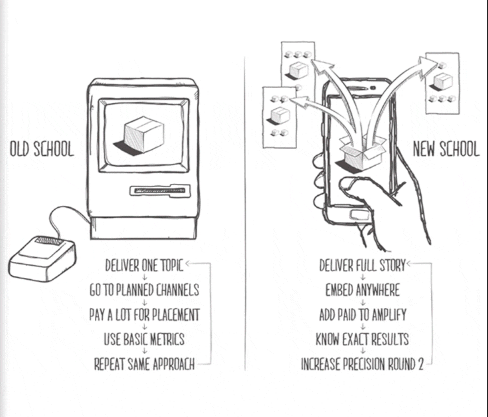
It’s no surprise, the media landscape has changed dramatically the past few years—and continues to change nearly every day. The way marketing looks at paid, earned, shared, and owned is flipping. Because of this “The five Rs are becoming complementary to the three Ps,” says Bob Pearson, Senior Advisor at W2O Group and author of Storytizing: What’s Next After Advertising?
At the recent Publisher Forum in Austin, Pearson said the 5 Rs means “Right Influencers, Right Audience, Right Content, Right Language, Right Channels.” To accomplish this he recommended developing the right audience architecture to know exactly what your audience is doing. Developing a new audience architecture can only be done by embracing trends and understanding how customers and their friends set the tone for what happens in the marketplace.
In the storytizing model—1,9,90—it’s not the one percent, the influencers who are most important; it’s the advocates, the nine percent who carry a trend and where the influencers get their ideas in the first place. The remaining 90 percent are the folks who are searching and consuming trends every day. “In the 1,9,90 model the “9” (the sharers) are your new media network. Give them relevant content so they can keep moving it—elasticity Of content. They are ready to share.,” Pearson says.
According to Bob’s law, with the one percent you plan for content and relationship building; with the nine percent you focus on paid and earned; and it’s important to listen to, educate, share with and provide unique experiences to the 90 percent. If it sounds like social media and mobile phones are a driving force here, they are. And search is the crux of everything.
“Search gives us the historical truth about what the market cares about. It tells us where we should be talking to people. It’s a goldmine that’s been ignored by the industry,” says Pearson. “If we listen to audiences they tell us exactly what they need. Content planning should be a mix — what we want them to have and what they need.”
The future of advertising starts looking a lot more like creating agile content that can be tailored to specific channels on the fly, according to audience wants, language and reactions. That sort of simplifies what storytizing is, but it gets to the heart of it. It’s telling audiences what they want in a way that’s most relevant to them, and in the places where they want to learn about it.
As Admonsters Editorial Director Gavin Dunaway asked, “Could/should this model be applied to a publisher’s audience analysis?” Then you just have to think about how an individual’s online activities reveal how they really think and what they want.

